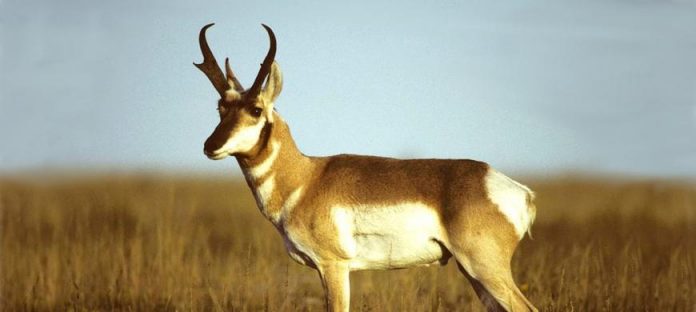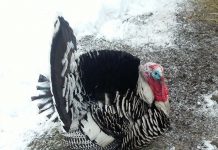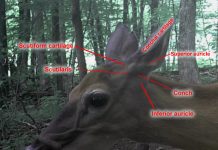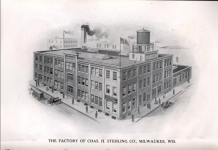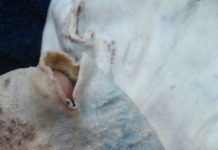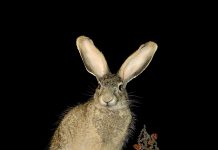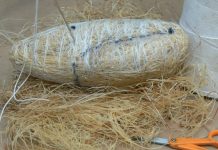Hello everyone, this is my first article contribution to the site. As the title suggests I will be explaining how to remove animal horns from the bone cores and why this is important. The following are some items that you will need for this task.
- A large pot
- Propane Burner and Propane
- Drill with no larger than a ¼” drill bit
- Water
- Arm and Hammer Liquid Laundry detergent
- Rubber Mallet
- Knife or Scalpel
- Something to mix the water and detergent with ( a paint stir stick works well)
- Metal Tongs
- Good Quality Gloves that are waterproof and chemical resistant
- Eye protection
- Waterproof Apron
This first thing you will have to do is to fill the pot about ¾ of the way full with water. Next you will get the propane and burner set up. Once the pot is on the burner and the burner is going add about half of a cap full of the detergent to the water and stir it up. Depending on how large your pot is you may need less than a half of a cap full of detergent or you may need more. I wouldn’t put more than one (1) full cap in though. Let the water start to boil and submerge half of the set of horns in the pot. Leave the horn in there for about 15-20 minutes. Then carefully remove horns and try to wiggle them. When doing this grab the horn about 4 inches up from the base. If it doesn’t start to move or wiggle take you knife or scalpel and carefully work it around the base of the horn. You want to make sure not to cut the actual horn because it will become very soft during this process. You will work the knife between the horn and the meat/tissue that holds the horn to the core. Then place the same horn back into the pot of boiling water. Repeat this process until the horn comes off of the core. If after several tries the core still isn’t starting to loosen try to hit the base of the horn with a rubber mallet. You can hit it fairly firm but be careful not to crack the horn because that will just create more work for you later. If the horn still is not loosening you can drill three (3) or four (4) small holes in the back of the horn. Start slightly above the bottom of the horn and drill a hole. Then move directly up from that and drill another hole and continue this until you get no more than four (4) holes. Put the horn and core back into the boiling water and it should come off fairly easy. This is the process that I use to remove all of my horns.
Another option is to bag the horns up (preferably in a black garbage bag) after you have caped and capped the animal. Poke a decent amount of holes in the bag and hang it up in a tree or off the side of a building where it gets sunlight for a large portion of the day. After hanging there for 3-4 weeks if it’s during the summer and maybe 6-8 weeks if it’s during the winter take the horns out of the bag and pull the horns off the cores. A note about this is that you want it to be outside because as the tissue starts to break down it will start to smell pretty bad. This process is less labor intensive but it doesn’t seem to work as well; at least not in my experience. Sometimes though after using this process you still need to do the first process that I outlined to get the horns off.
If you have any questions please feel free to email me or message me on here. In next month’s article I will cover how to re-attach the horns for mounting them.
Tim Patton
President
Patton’s Taxidermy Shop LLC


